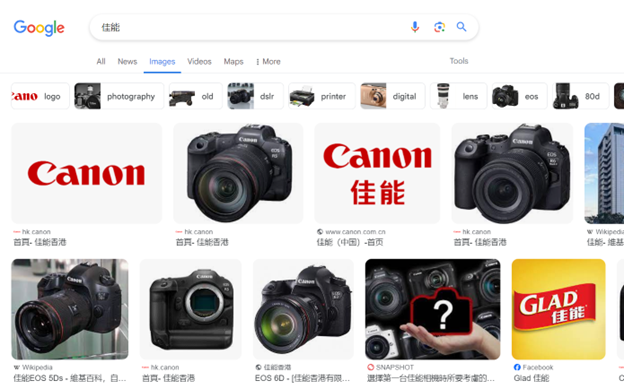Legal translators often have a very hard time translating brand names correctly or usefully, and this causes big risks for legal compliance staff. Most translators do not understand the difference between trademarks and registered business names in intellectual property law, for instance, and tend to apply a copy and paste mindset when doing translations. Nonetheless, the manner in which a brand’s name is translated can, in some cases, cause anti-money laundering or anti-bribery compliance programs to outright fail.
To complicate matters further, the audience itself is relevant—an intellectual property department will behave much differently than anti-kickback or anti-money laundering departments, and opposite approaches are often needed. I believe the skills gap in translation here can account for many of the stunning failures observed in recent years in bribery, money laundering, and intellectual property loss in China.
What Is a brand in Chinese intellectual property law?
Before someone can translate brand names correctly, they need to be able to know exactly what a brand is, because it can legally be three or more different things. There is a big difference in law between a trademark and a distinctive element, even though both often carry a business name on them. In Chinese law, a distinctive element is the part of the company name that distinguishes it from other companies, which is something that names registrars will check closely. The company’s name will also include jurisdictional, industry classification, and entity elements. Typically, these can only include Chinese-language words.
On the other hand, a trademark registration is a business name used for purposes of communication, and the trademark is what permits a company to use a business name in communications. In some circumstances, a company could be prohibited from using its registered business name if it would confuse the public. Finally, a business can also use a business name when it’s totally unregistered, and most midsize and larger companies in China do seem to have an English name that is not registered in any way but is nonetheless in use, with quite a few companies selling fakes under appropriated names.
Under Chinese intellectual property law, these two different things interact in very deliberate ways. The government will check to see if there is a conflict between the distinctive element of a company when it’s registered, and an existing registered trademark. If there is a possibility of confusion with the trademark, then the government will not allow registering that company name. If the conflicting company name is registered anyway, then the trademark owner will have certain intellectual property rights against the same company. What often happens in translation is that the infringing company attempts to confuse the public, and poorly qualified translators are duped into being confused as well.
The above discussion also implies there is no such thing under Chinese intellectual property law as a brand, there are trademarks, famous marks, and business entity names. Each of these is distinct, and each of them can represent, or infringe upon, a brand.
Trademark Infringement Must be Visible in Legal Translation
The legal case Volkswagen v. Baidu illustrates why a translator might not want to follow the glossary approach when translating company names. In the Volkswagen case, the famous car company sued Baidu for selling search listings to a company in China that uses the name “Dazhong” in its company name. “Dazhong,” as it happens, is also the Volkswagen’s Chinese brand name, and indeed Volkswagen owned the trademarks, while the offending company simply used the “Dazhong” brand in its name.
In a similar case, the Dazhong Dianping review platform also listed the Dazhong Motor Company above Volkswagen in some places. Here is a paradox: in all three cases, “Dazhong” is the exact same word. “Dazhong” doesn’t mean Volkswagen; it’s a brand that was registered by Volkswagen. In this case, Dazhong Dianping could be sued for misleading consumers into believing that Dazhong Motor Company is the same as Volkswagen. That’s a lot of “Dazhong”s and a lot of potential confusion.
Imagine you are translating a due diligence report on the state of Volkswagen’s trademarks in China. How should the name “Dazhong” be translated in this case? I would argue that the European car company brand should be translated as Volkswagen, the local car company as Dazhong Motor Company, and the name of the review platform as Dazhong Dianping. Some translators might want to do things differently. For example, they might assume every “Dazhong” = Volkswagen. In this case, after translating the non-Volkswagen “Dazhong” as Volkswagen, they would then render another company as Volkswagen Dianping and realize something is amiss in the translation. In this case, I think it’s very apparent that Dazhong Motor Company is not Volkswagen, and the case should be shut and closed.
But what if the Dazhong Motor Company took things one step further, and officially translated its Chinese name into English as Volkswagen to deceive consumers? How would you translate the names in this case? A translator in this situation is unlikely to know their client’s nefarious intent, but I draw from the California case USA v. Chen, involving the Taiwan HTC Corporation, for inspiration. In Chen, the name of an entity was mistranslated in order to commit wire fraud targeting the CEO of HTC Corporation, resulting in funds being sent to the wrong entity.
In practice, quite a lot of companies in China pick English names that are already in use by another company and do not hold trademarks to those names. China’s law on naming is relatively clear: the English name is governed by trademark law, and the use of that name on the internet or in transactions, such as registering a social media account, requires having an effective registration of that trademarked name. A translator that simply assumes for example “Dazhong” must be Volkswagen
Nonetheless, many companies in China use English names for which they lack the legal rights. This poses a great deal of risk for both fraud and anti-money laundering “know your customer” related translations. In this case, if a translator simply looks up the English name of a company on a website, they could fall into a common trap set for translation, and quickly become inadvertent accessories to wire fraud or narcotics trafficking schemes. Quite remarkably, the behavior is so predictable that criminal organizations deliberately target translators in these schemes.
In many cases, a separate consideration for translating brand names is ambiguity: many major international brands use the same exact Chinese names. A good example of this is the Glad sandwich bags brand and the Canon cameras brand, which in Chinese both use the same exact brand name, “Jianeng.” Usually, this wouldn’t be a huge problem. However, on import/export, money laundering, and bribery compliance projects, translators will often be presented with spreadsheets containing names of hundreds of transaction counterparties with no context with which to identify who these companies actually belong to.
I’ve seen many cases where translators simply assumed a certain multinational company was the counterparty in money laundering related documents. For a client working in anti-money laundering doing a “know your customer’s customer” due diligence review, such assumptions could have significant risks. Assume for the sake of argument the KYCC counterparties in the spreadsheet are shell companies doing money laundering, but the translator assumes they are the Glad sandwich bag brand.

In my opinion, sound banking practice involves compliance, second oversight review, and compliance testing, with both in-country and home office compliance departments at work. Many banks do this. In the above example, the reviewer might gloss over the obvious problem. A bank could wind up with a situation similar to the scenario of the Binance money laundering scandal of 2023, a scheme perpetrated by a China tech bro who took his Shanghai team abroad, and one where a smoking gun was a Chinglish-y statement based on the compliance idiom (睁一只眼,闭一只眼).
My interpretation of the Binance case is that the original Shanghai team was doing compliance work based on their local cultural norms, which differed a lot from United States norms. As a result, the company violated US law and was fined $4.5 billion. Assuming names in corporate records must be the corresponding famous company could easily result in blinding second and compliance testing reviewers to legal violations.
Translating business names in compliance cases
When dealing with product safety compliance or endangered species law, such as in the Fonterra Foods or Lumber Liquidators lawsuits, a totally different Skopos Theory logic applies. Generally, this is where major companies and brands are already involved. For example, consider how Lumber Liquidators was fined for violation of the Lacey Act, which prohibits the felling of endangered tree species for lumber. In this case, we see numerous contracts for subsidiaries owned by Lumber Liquidators with the company’s printed on them. How would using the name “Lumber Liquidators” affect a compliance or legal case? Arguably, it would increase the probability that a compliance officer or lawyer spots the issue, and there is a big difference between a third- party company and one’s own employees felling protected wood. In the Fonterra Foods case, we can see that if a company’s headquarters is looking at internet posts about infant formula containing poisons, it helps a lot to have the company’s name specifically identified.
The same can be said of any sort of FCPA compliance matters. When a particular company is investigating their own subsidiaries carrying its own name, the risk of misappropriation of their trade name in these kinds of documents is going to be fairly remote. Take Walmart as an example. Usually, the various Walmart entities, literally named “Wo’erma” and such, are named consistently and are coming from documents pulled off of Walmart’s own computers. The DOJ press releases about Walmart’s FCPA cases identified the activities of any entities under Walmart’s control as acting on behalf of the parent corporation.
Conclusion
Translating Chinese brand names to English is not as simple as it seems because it can have a variety of effects on end users and even be misleading. Most translators are unaware that the distinctive element of a company’s registered entity name is not the same as a trademarked brand name. Moreover, many famous companies may even be permitted to use the same Chinese name if it’s in different industries. An easy rule of thumb is that in trademark disputes and money laundering, avoid casually applying the brand name to everything. For internal product liability and bribery investigations, using the company’s brand name for everything is wiser. Of course, this requires the law firm to follow ethical guidelines for preparing translators.
